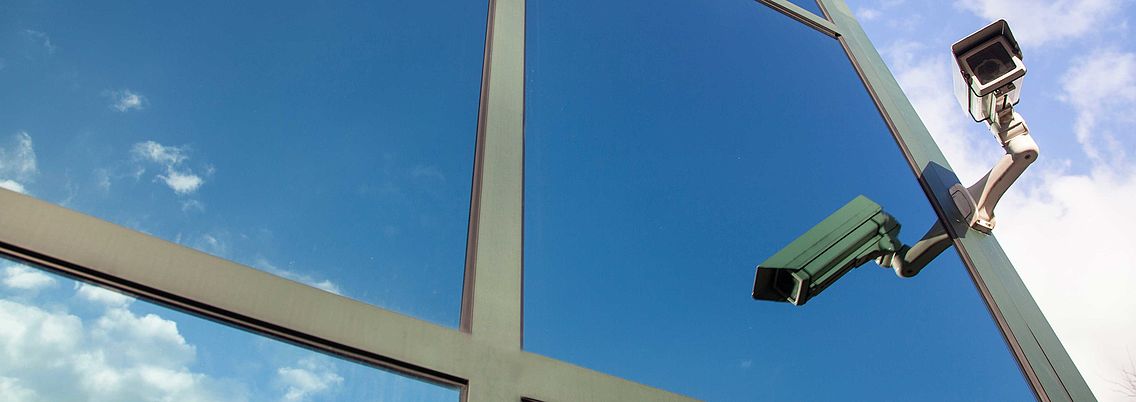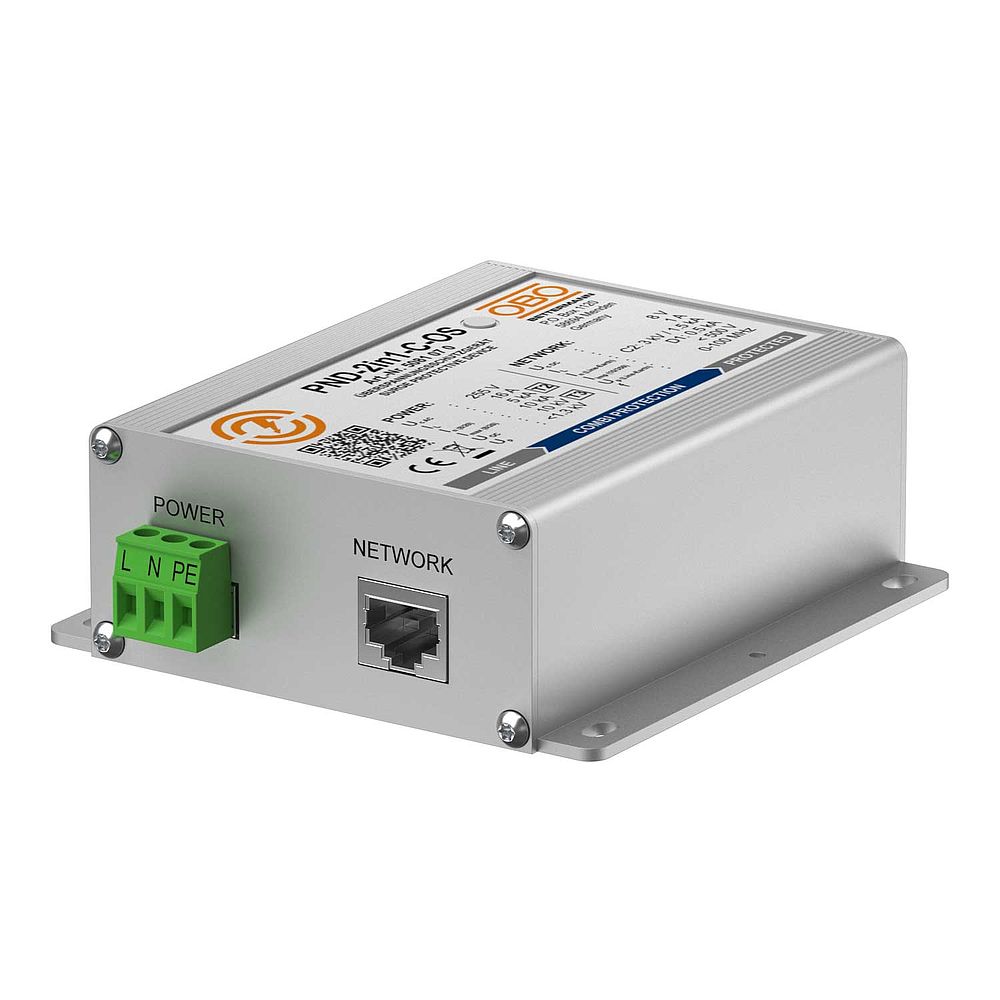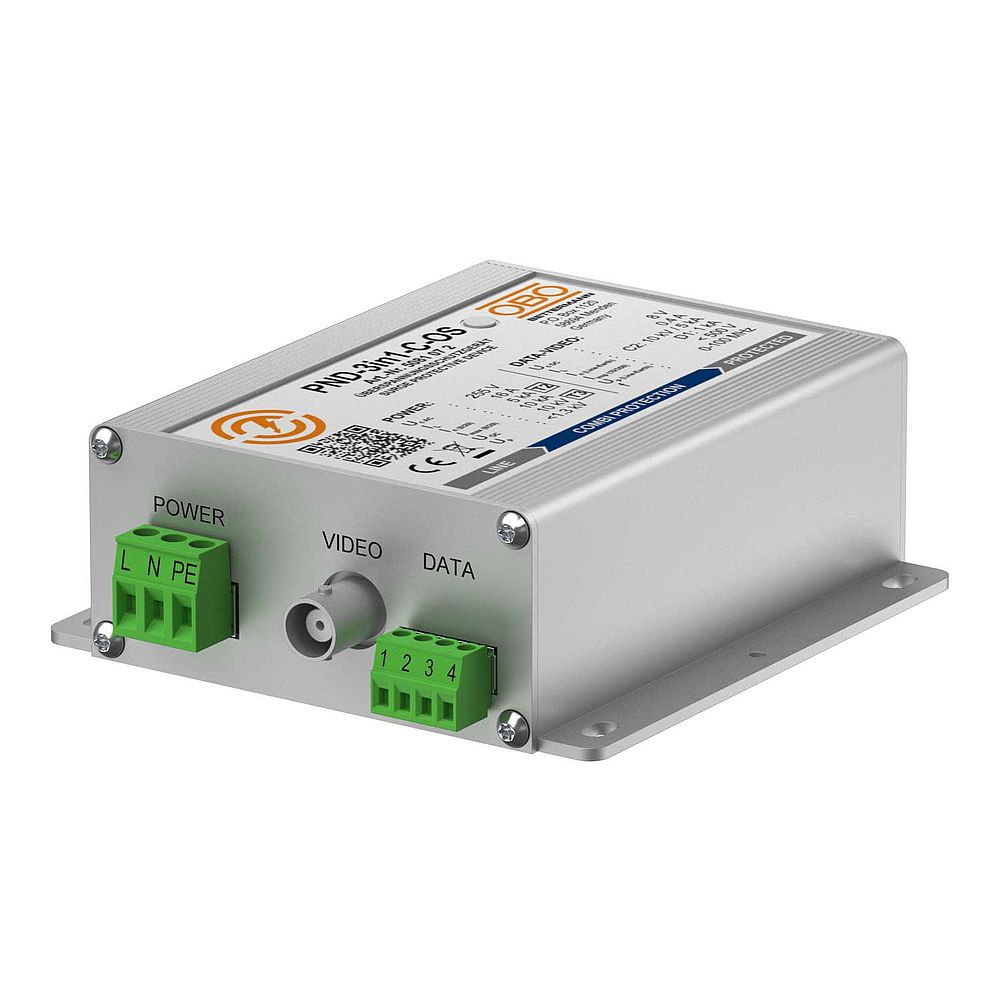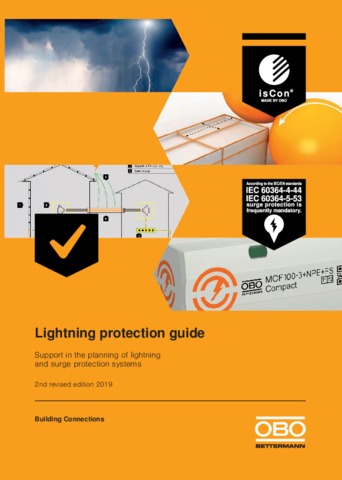
Lightning and surge protection for closed-circuit television systems (CCTV)
Protection of power, data and control cables in one device
Camera systems are used to monitor rooms, buildings and outdoor spaces, in order to record unauthorised access or criminal activities. The high availability of these video monitoring systems must therefore be guaranteed at all times.
To prevent a failure of cameras and display systems, the components must be protected against atmospheric discharges and surge voltages. For a safe lightning protection concept, both the power and data cables and the control cables of the camera system must be shielded against surge voltages.
OBO has developed tailor-made solutions for these requirements, with which power, data and control cables can simultaneously
be protected with just one device.With the PND 2in1 and PND 3in1 combination protection devices and the Net Defender ND-CAT6, analogue and IP camera systems can be secured efficiently.

Video monitoring systems: This is how they are used

The camera systems are usually CCTV systems (closed circuit television systems), whose recordings, unlike general camera systems, are only intended for a restricted circle of users.
In contrast to, for example, broadcasts for public television, the recorded images are only accessible to a limited number of recipients (closed circuit). CCTV camera systems are frequently installed outside buildings or on objects and are thus exposed to external and possibly damaging influences, such as thunderstorms.
During a thunderstorm, the devices
- can be completely destroyed by a direct lightning strike,
- or be damaged by a remote lightning strike, if, during the release of electromagnetic waves, surge voltages in transmission cables are induced.
Technical structure of the camera monitoring systems

Camera system structures have various differences. For video transmission, a coaxial cable with a BNC plug connection is frequently used as a cable medium, or a twisted pair cable is used.
If the camera also possesses a control unit to swivel and tilt the camera head, this transmission is usually controlled using a serial RS485 interface via a twisted pair cable. A three-pole cable is used as the power supply.
Depending on the version, the data and video interfaces are frequently run together, for example through an RJ45 network connection.
Modern IP cameras possess a single RJ45 connection, which transmits both the data and video signal and also the power supply via Power over Ethernet (PoE).
Important: To fulfil the requirements for a comprehensive surge protection concept, all the cables must be included in the equipotential bonding.
The combination protection devices for efficient surge protection
Our PND devices and the Net Defenders were specially designed to be able to catch the technical differences in camera systems efficiently and to offer protection.
- PND 3in1 can be used with analogue camera systems with and without external lightning protection.
- PND-2in1 is suitable for IP camera systems without Power over Ethernet (PoE) with and without external lightning protection.
- Net Defenders are used with IP camera systems with Power over Ethernet (PoE).
The ND-CAT6/E-B (type 1) can be used in lightning protection zones from 0 to 1. For lightning protection zones 1 to 3, ND-CAT6/E-F (type 2+3) must be used.



Device earthing takes place via the hat rail or a PE screw terminal. All devices are delivered including a hat rail fastening set. The PND devices possess an LED operating display for simple function monitoring on the top side of the housing. The mounting instructions can be recalled using the printed QR code.
The surge protection devices should be installed as close as possible to the device to be protected, allowing the protection level and the risk of coupling on the protected side to be kept low. In addition, the length of the connection from the surge protection device to the local equipotential bonding should be kept as short as possible.


